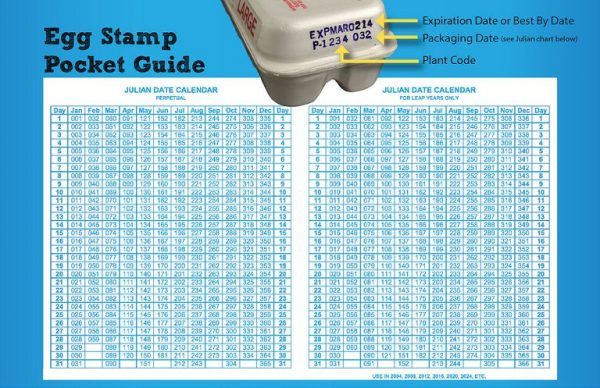Eggs are one of the healthiest food you can have, providing high-quality protein and containing absolutely no sugar and no carbs. According to Statista.com, consumption of eggs in the U.S. was estimated at 274.2 eggs per person in 2017.
Now, we’re going to help you select the freshest eggs by decoding all the numbers you see on the egg cartons.
Most of us will check the expiration date on an egg carton before we buy it. However, what you may not have noticed is the other set of numbers next to the expiration date. These numbers are actually a date in the Julian calendar format, and they reveal the day that the eggs were packed. For example, if these numbers are 276, that represents the 276th day of the year, meaning they were packed on October 3.
The USDA states that eggs that are refrigerated will stay fresh four to five weeks past their packed date. Here’s a chart that will help you convert the Julian calendar to our calendar system.

There are other numbers on your egg carton that can also be helpful. Egg cartons that have been graded by the USTA must also include a processing plant code and a grade indicating egg quality. The processing plant code will let you know where your eggs were packaged and how local they are. This code starts with a P followed by a four digit number, and you can use this hand system to figure out the plant’s location.
The USDA grading system ranges from AA to B, and it pretty much works like a grading system in school. AA is equivalent to an A+, while B eggs aren’t necessarily bad, but they aren’t the best either.
Be sure to be on the lookout for these numbers and letters next time you purchase eggs!
COMMENTS POLICY: We have no tolerance for messages of violence, racism, vulgarity, obscenity or other such discourteous behavior. Thank you for contributing to a respectful and useful online dialogue.